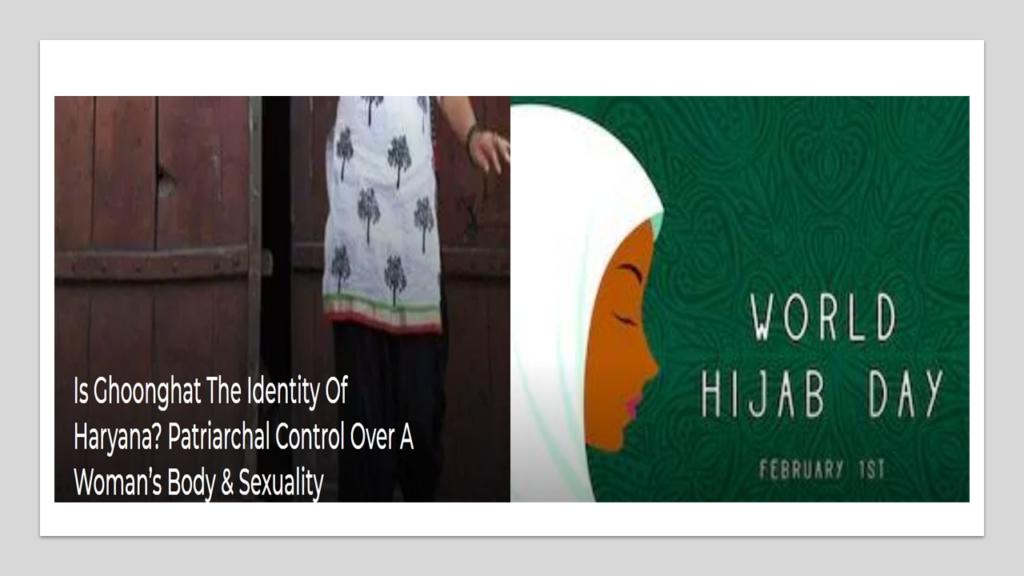Recently, a popular ‘feminist’ blog published an article on the social customs of the Islamic society in India, in which they talked about the custom of wearing hijab, a headscarf that is traditionally worn by Muslim women.
The article, published on the blog called ‘Feminism in India’, spoke quite positively about the custom, praising it without hesitation. To quote an excerpt from the article:-
“It has often been alleged that not all choices are feminist choices – but is it restricted to only hijab? Women have been questioned for doing makeup, not being ‘feminine’ enough or being overtly feminine.
Attiya Latif states, “Western feminists tell Muslim women that they can’t conceptualise their own feminism, and instead adhere to theirs. When in reality, feminism is a diverse movement where women of various cultures and religions can determine equality for themselves.”
The article further mentioned, “I was that person who had some kind of a preconceived notion, but when I got a chance to live with them I felt very normal. They are just like any of us… (sic).”
IF YOU CAN NOT ACCEPT HIJAB AS A CHOICE EVEN AFTER MILLIONS OF WOMEN SAYING SO – IT IS DUE TO YOUR BIGOTRY”
Let this sink in. An Islamic custom that is extremely oppressive towards women is celebrated as a feminist, and anyone who objects to this is a bigot! The irony can’t get nastier than this.
This article from Feminism in India heaps so much praise for a custom that is more of compulsion rather than choice. Wearing hijab is not even an Indian practice, it is malpractice that has arrived from the Arabian hinterlands. We haven’t begun talking about the far more oppressive burqa and niqab.
Interestingly, this website had no qualms in criticizing the rather redundant practice of Ghoonghat, which is now extremely rare these days.
To quote an excerpt from that article, “Since power is equated with violent and aggressive masculinity, the state is identified with masculine power that successfully protects the motherland, the subjugated feminine. Haryana’s identity, and its self-image, as a powerful, virile state is secured through how well it can invisbilize women and curtail their sexual agency making careful use of the trope of protection. Women become vehicles through which the identity of the state can be secured and sustained as powerful, and often, valiant. The picture of the veiled woman along with the caption hence conveys a pretty unambiguous message.”
The above excerpt is a clear proof of why the current model of feminism is more of a laughing stock for the entire world. The hypocrisy in dealing with two different malpractices of different ethnicities shows how Indian feminists deftly convert their fight against the so-called patriarchy into the vicious bashing of the Sanatan community.
Moreover, the ghoonghat is a redundant tradition that is hardly observed in the country nowadays, except for some remote villages. Also, this practice was mostly limited to the Northcentral India. So why does ‘Feminism in India’ paint this redundant practice as the current identity of a state, which has put these superstitions well behind them?
This is not, however, entirely unexpected. Our left liberals are well known for being shameless hypocrites in this matter. On one hand, they would criticize anything even remotely associated with Hinduism.
On the other hand, however, they would shamelessly glorify malpractices in other religions, even if they are literally a threat to the entire mankind.
What ‘Feminism in India’ has done is to glorify malpractice that has seriously no place in a modern society.
Given that these so-called feminists are finding few takers for their redundant propaganda, they’re trying everything possible in order to normalize such malpractices. They forget, however, that no matter how much you decorate it, a cat will never become a peacock.
